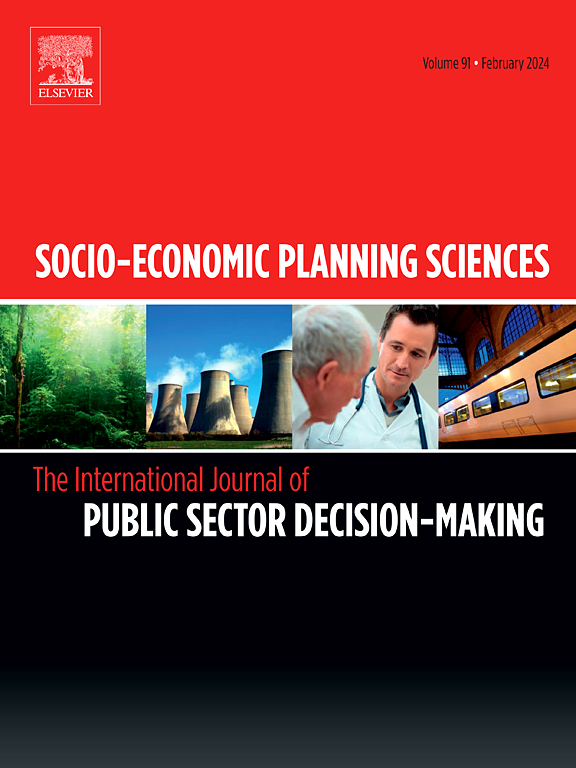中国森林部门效率评价:一种元前沿DEA方法
IF 5.4
2区 经济学
Q1 ECONOMICS
引用次数: 0
摘要
评价森林资源绩效有助于实现可持续发展目标。考虑区域异质性,本研究建立了一种改进的元前沿SBM模型来评估森林绩效。改进后的元前沿SBM模型有效地处理了森林资源禀赋差异引起的区域异质性,克服了非径向元前沿方法中目标不可行和技术差距比(TGR)值不合理的问题,为制定有效的绩效政策提供了有意义的信息(如元效率、群体效率和TGR)。本研究的实证结果表明,在研究期间,森林绩效在各省之间并不均衡。具体来说,一些省份,如重庆,一直达到最高的1000分,而一些省份一直表现较差。两区非森林富庶地区技术进步较快,TGR由2016年的0.639上升至2020年的0.883。此外,我们发现传统的TGR模型与本文提出的模型相比低估了各省技术差距的价值。最后,提出了效率低下省份的改进策略,以提高管理效率,缩小区域技术差距。本文章由计算机程序翻译,如有差异,请以英文原文为准。
Efficiency evaluation of the forest sector in China: A meta-frontier DEA approach
Evaluating forest resource performance supports sustainable development goals. Considering regional heterogeneity, this study develops an improved meta-frontier SBM model to assess forest performance. The improved meta-frontier SBM model effectively handles regional heterogeneity caused by differences in forest resource endowments and overcomes both the issue of infeasible targets and the problem of unreasonable technology gap ratio (TGR) values in non-radial meta-frontier approach, thus providing meaningful information (such as meta-efficiency, group efficiency, and TGR) to guide the development of effective policies to improve performance. This study's empirical results indicate that forest performance was not equalized among the provinces over the study period. Specifically, with some provinces, such as Chongqing consistently achieved the maximum group efficiency score of 1.000 and some consistently performing worse. In the two areas analyzed, non-forest rich areas demonstrated rapid technological improvement, with the TGR increasing from 0.639 in 2016 to 0.883 in 2020. Additionally, we found that the traditional TGR model underestimates the value of the technology gap in provinces compared to the proposed model. Finally, improvement strategies are proposed for inefficient provinces to enhance management efficiency and reduce regional technology gaps.
求助全文
通过发布文献求助,成功后即可免费获取论文全文。
去求助
来源期刊

Socio-economic Planning Sciences
OPERATIONS RESEARCH & MANAGEMENT SCIENCE-
CiteScore
9.40
自引率
13.10%
发文量
294
审稿时长
58 days
期刊介绍:
Studies directed toward the more effective utilization of existing resources, e.g. mathematical programming models of health care delivery systems with relevance to more effective program design; systems analysis of fire outbreaks and its relevance to the location of fire stations; statistical analysis of the efficiency of a developing country economy or industry.
Studies relating to the interaction of various segments of society and technology, e.g. the effects of government health policies on the utilization and design of hospital facilities; the relationship between housing density and the demands on public transportation or other service facilities: patterns and implications of urban development and air or water pollution.
Studies devoted to the anticipations of and response to future needs for social, health and other human services, e.g. the relationship between industrial growth and the development of educational resources in affected areas; investigation of future demands for material and child health resources in a developing country; design of effective recycling in an urban setting.
 求助内容:
求助内容: 应助结果提醒方式:
应助结果提醒方式:


